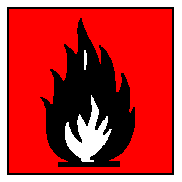International Chemical Safety Cards
| n-PENTANE | ICSC: 0534 |
| n-PENTANE Amyl hydride C5H12/CH3(CH2)3CH3 Molecular mass: 72.2 CAS # 109-66-0 RTECS # RZ9450000 ICSC # 0534 UN # 1265 EC # 601-006-00-1 |
 |
| TYPES OF HAZARD/ EXPOSURE |
ACUTE HAZARDS/ SYMPTOMS |
PREVENTION | FIRST AID/ FIRE FIGHTING |
| FIRE | Highly flammable. |
NO open flames, NO sparks,
and NO smoking. NO contact with strong oxidants. |
AFFF, alcohol-resistant
foam, powder, carbon dioxide. |
| EXPLOSION | Vapour/air mixtures are
explosive. |
Closed system, ventilation,
explosion-proof electrical equipment and lighting. Prevent build-up of electrostatic
charges (e.g., by grounding). Do NOT use compressed air for filling, discharging, or
handling. Use non-sparking handtools. |
In case of fire: keep
drums, etc., cool by spraying with water. |
| EXPOSURE | |
|
|
| INHALATION | Dizziness. Drowsiness.
Headache. Nausea. Unconsciousness. Vomiting. |
Ventilation, local exhaust,
or breathing protection. |
Fresh air, rest.
Half-upright position. Artificial respiration if indicated. Refer for medical attention. |
| SKIN | Dry skin. |
Protective gloves. |
Remove contaminated
clothes. Rinse and then wash skin with water and soap. |
| EYES | |
Safety goggles or eye
protection in combination with breathing protection. |
First rinse with plenty of
water for several minutes (remove contact lenses if easily possible), then take to a
doctor. |
| INGESTION | (further see Inhalation). |
Do not eat, drink, or smoke
during work. |
Rinse mouth. Do NOT induce
vomiting. Give plenty of water to drink. Rest. Refer for medical attention. |
| SPILLAGE DISPOSAL | STORAGE | PACKAGING & LABELLING | ||
| Evacuate danger area!
Consult an expert! Ventilation. Collect leaking and spilled liquid in sealable containers
as far as possible. Absorb remaining liquid in sand or inert absorbent and remove to safe
place. Do NOT wash away into sewer (extra personal protection: self-contained breathing
apparatus). |
Fireproof. Separated from
strong oxidants. Cool. Well closed. |
Unbreakable packaging; put
breakable packaging into closed unbreakable container. F symbol R: 11 S: 9-16-29-33 UN Hazard Class: 3.1 UN Packing Group: I |
||
| SEE IMPORTANT INFORMATION ON BACK | ||||
|
||||